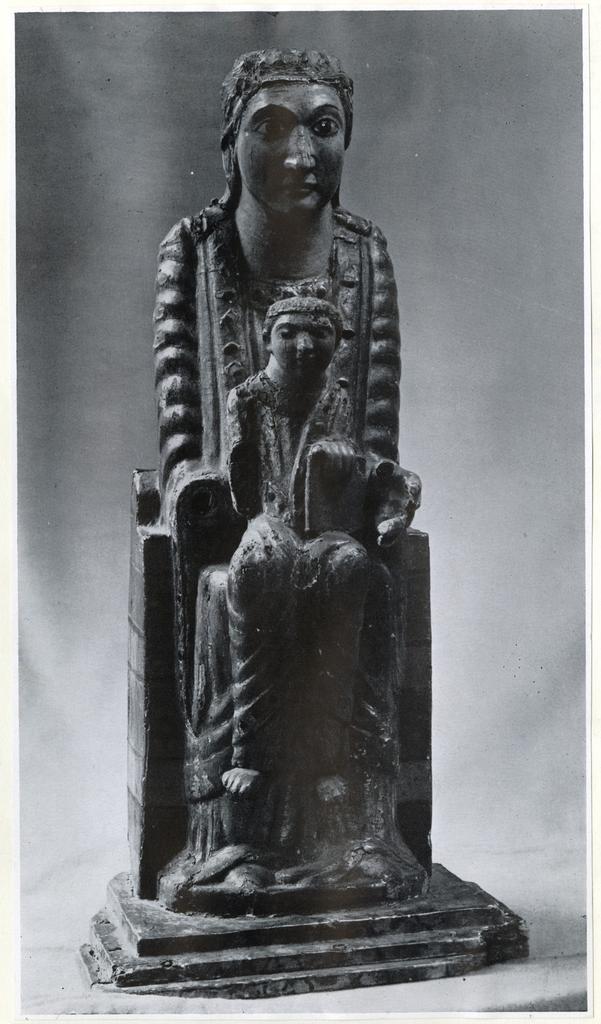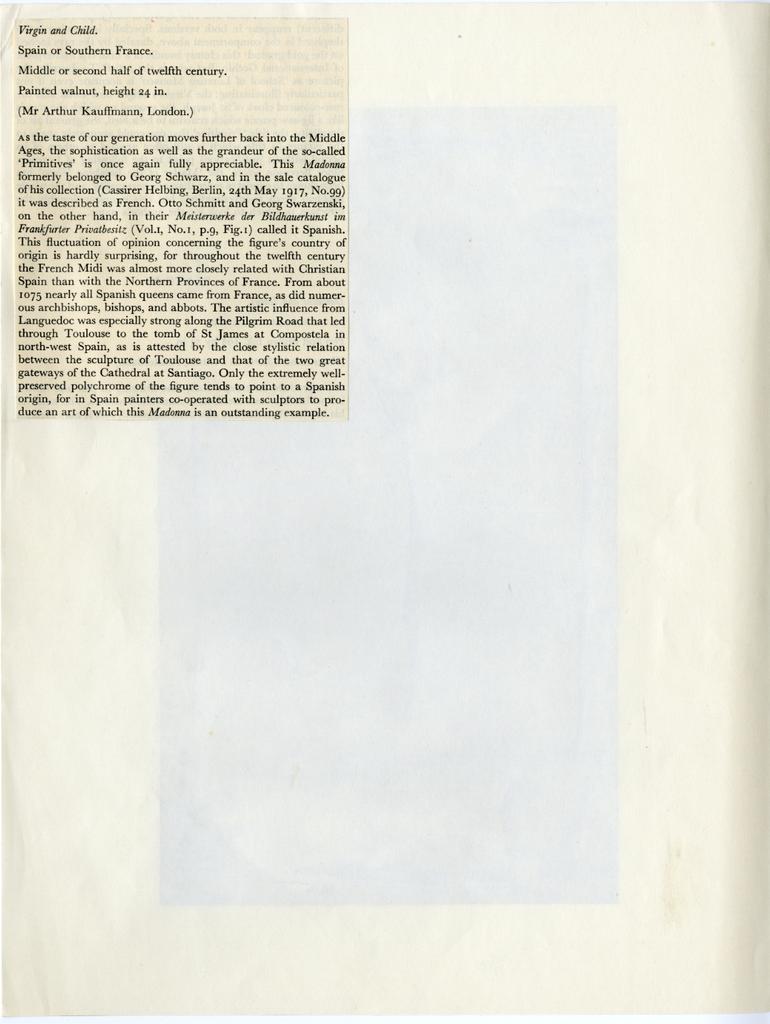Anonimo , Madonna col bambino, arte spagnola c. 1150, in legno dipinto, presso A. Kauffmann di Londra
CLASSIFICATION
Location
Fototeca Ragghianti - Complesso Monumentale S. Micheletto, Via S. Micheletto, 3, Lucca (Toscana, Italia)
Inventory number
00068408
Archival series
Arte medievale
Container
20. Scultura medievale. Topografico: Paesi europei e extraeuropei
Folder
Penisola iberica
Shelfmark
AM/20/5
Cataloguing Institution
S122
OBJECT
Category
documentazione del patrimonio storico artistico
Object
positivo
Number of objects
1
Trattamento catalografico
bene semplice
BW/C - Material and technique
Dimensions
mm 237 × 137 (supporto primario)
SOGGETTO / TITOLO
Subject
Autore opera fotografata
Attributed title
Madonna col bambino, arte spagnola c. 1150, in legno dipinto, presso A. Kauffmann di Londra
Source of title
Bibliografia: Selearte 22, 1956
Autore / Responsabilità
Autore
Reason for attribution
n.r. (M)
Dating
Dates (from – to)
XX (1940 ca. - 1956 ante )
Reason for dating
bibliografia
Iscrizione, Emblemi, Marchi, Stemmi, Timbri
Posizione
sul supporto secondario: verso
Definizione
iscrizione
Trascrizione
[vedi annotazioni]
Note
etichetta a stampa
OWNERSHIP
Specific owner
Fondazione Centro Studi sull'Arte Licia e Carlo Ludovico Ragghianti
NOTES
Notes
Virgin and Child.
Spain or Southern France.
Middle or second half of twelfth century.
Painted walnut, height 24 in.
(Mr Arthur Kauffmann, London.)
As the taste of generation moves further back into the Middle Ages, the sophistication as well as the grandeur of the so-called 'Primitives' is once again fully appreciable. This Madonna formerly belonged Georg Schwarz, and in the sale catalogue of his collection (Cassirer Helbing, Berlin, 24th May 1917, No. 99) it was described as French. Otto Schmitt and Georg Swarzenski, on the other hand, in their Meisterwerke der Bildhauerkunst im Frankfurter Privatbesitz (Vol. I, No. I, p. 9, Fig. I) called it Spanish. This fluctuation of opinion concerning the figure's country of origin is hardly surprising, for throughout the twelfth century the French Midi was almost more closely related with Christian Spain then with the Northern Provinces of France. From about 1075 nearly all Spanish queens came from France, as did numerous archbishops, bishops, and abbots. The artistic influence from Languedoc was especially strong along the Pilgrim Road that led through Toulouse to the tomb of St James at Compostela in north-west Spain, as is attested by the close stylistic relation between the sculpture of Toulouse and that of the two great gateways of the Cathedral at Santiago. Only the extremely well-preserved plychrome of the figure tends to point to a Spanish origin, for in Spain painters co-operated with sculptors to produce an art of which this Madonna is an outstanding example.
Bibliografia specifica:
Selarte, 22, 1956, p. 77

